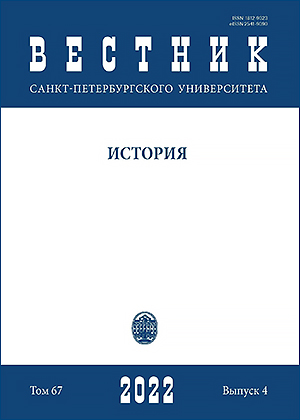Who and How is Studying the Russian Presence on the South Manchurian Railway
DOI:
https://doi.org/10.21638/spbu02.2022.416Abstract
Based on the works by English-speaking authors on the South Manchurian Railway published after 2000, the author explores the phenomenon of the Russian/Soviet presence in Manchuria and in East Asia. The object of study was under the jurisdiction of Russia for a short time, but remained a kind of barometer of the pre- and post-war regional order. This is due to the significant strengthening of Japan and the Japanese presence, so the “before – after” scheme is present in the reviewed studies, and the change in the disposition of the powers is one of the main narrative plots. A similar “before – after” scheme in a number of works reflects the transformation of the positions of individual Western scholars under the influence of the so-called “memory wars” against the background of changes in the system of international relations over the past 7–8 years. The works in question concentrate on those spheres of public life that were affected by the railway irrespective of its subordination. The conclusions of the article reveal that this topic is under-researched; that foreign scholars make little use of the Russian resources and the potential of Russian researchers; that some opportunistic studies seek to present Russia as an aggressor and an expansionist, and the imperial policy - as a failure and disaster for the region.
Keywords:
Russian presence, Soviet presence, Russian Empire, USSR, Japan, China, Manchuria, South Manchurian Railway, Dairen, Russo-Japanese War of 1904–1905
Downloads
References
Downloads
Published
How to Cite
Issue
Section
License
Articles of "Vestnik of Saint Petersburg University. History" are open access distributed under the terms of the License Agreement with Saint Petersburg State University, which permits to the authors unrestricted distribution and self-archiving free of charge.





